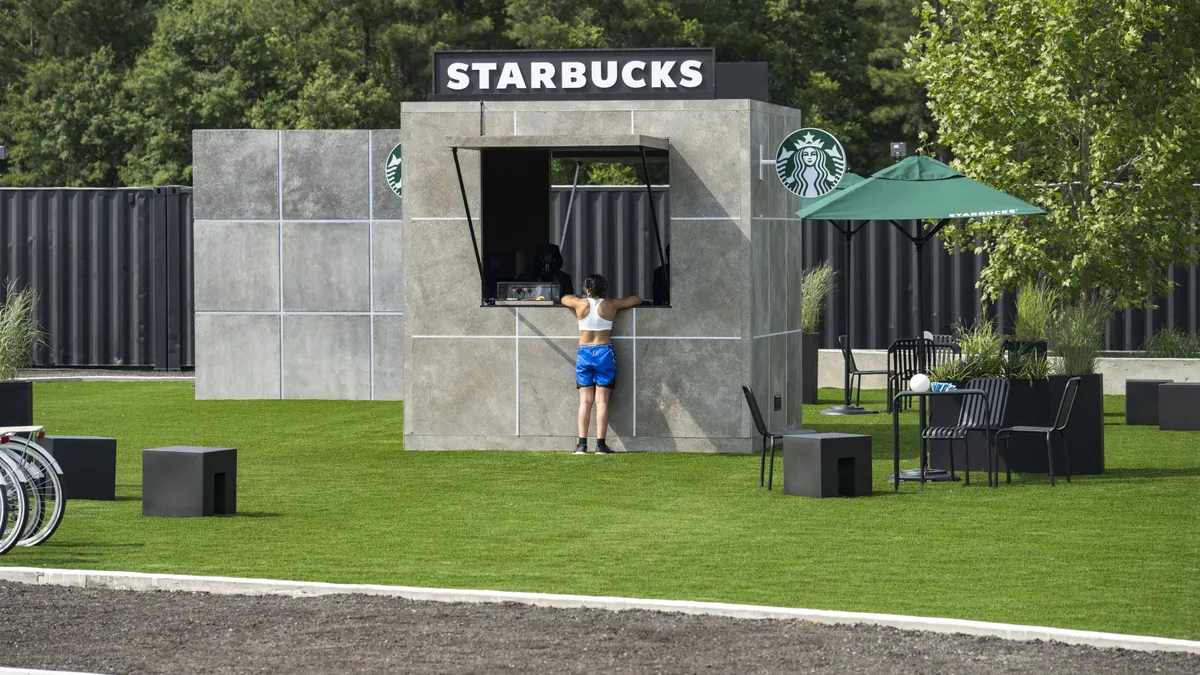Monster.com is making a risky bet amid a turnaround effort that looks to win back some of the younger users the once-hot dot-com stalwart has seen slip away in recent years: It's developing a bigger TV advertising play.
On paper, TV sounds like a potentially odd fit for engaging internet-savvy audiences. Millennials and other digital natives who are quickly entering the job market, like the smartphone-hooked Gen Z, have led a surge in cord-cutting that's sent broadcast and cable network ratings into a tailspin. Monster executives don't shy away from how much the job search engine's luster has faded with these crucial groups in recent years, pointing to a long road for recovery ahead.
"We've actually lost a lot of the younger generation," Shaun Farrar, who joined Monster as senior director of global media in October, told Marketing Dive in a phone interview. He reinforced the brand affinity the company retains with older demographics, while admitting that "anyone younger than 35 thinks of Monster as the energy drink or the truck series."
TV, however, has started to adapt to the programmatic and data-driven era, presenting an opportunity for marketers sitting on troves of user information. Working around a refresh campaign that launched in mid-April and with a new partner in Simulmedia, Monster hopes to be able to better target ads across channels, especially on linear TV.
"When I started, we brought the entire stack together," Farrar said. "We weren't consistently on television, we weren't in paid social all the time."
Reestablishing a handshake
To shake things up, Monster turned to a mix of Simulmedia's brand-building and performance-based TV solutions — the types of tools that are in vogue in the era of direct-to-consumer (DTC) disruptors. Monster is among more than 90 clients beta piloting Simulmedia's D2Cx.com solution, a smart bidding platform that last week introduced new automated creative and measurement capabilities.
"[Monster is] now essentially establishing a new handshake with the marketplace after nearly two decades of familiarity," Matt Collins, SVP of marketing at Simulmedia, told Marketing Dive. "We're seeing many other brands who, in their own way, are challenging preconceived notions and giving much deeper-pocketed incumbents a real run for their money."
With Simulmedia's solutions in place, Monster has tapped into data sets, like its standard occupational classification (SOC) information, to create a custom audience segment only reachable via TV, which it calls "Generation M." Through this framework, the company fuses age and income parameters — 18-to-34-years-old; under $100,000 per year — with people it knows are within 21 different SOCs, Farrar explained.
"By combining all of that, we can then identify what programming, what networks, what dayparts, what time of day — you name it — the Generation M audience is watching on TV," Farrar said.
An old well
Monster is no stranger to TV advertising. "Deep-pocketed" would be a good way to describe the company's past approach to the channel. The brand first became a household name through a series of flashy, winning Super Bowl campaigns that ran from the late '90s to the mid-aughts.
From there, the trajectory has been rockier. The company saw its market share shrink as more digital disruptors, from LinkedIn to ZipRecruiter, entered the online human resources space. Prior revitalization efforts, including a 2014 brand refresh, failed to produce the required turnaround, and Monster was acquired by the Dutch HR specialist Randstad for $429 million in 2016.
"[They've gone] through that transition of being a market leader ahead of everyone else, and then other competitors have come into the realm and they've needed to kind of relaunch their brand," Lauren Fry, VP of customer success and business analytics at Simulmedia, told Marketing Dive.
Repositioning Monster again as a disruptor coming up from below could pay off. But returning to a bigger TV focus has required a retooling of strategy, not just creatively, but in terms of media rollout. Monster is looking less at destination advertising — there are no $5 million Super Bowl ad buys this time around — to instead run what Farrar called an "always-on" campaign.
The scope of the campaign, which was developed with the agency MullenLowe Group, is more tailored, though not necessarily small. Called "This Isn't Working Anymore," the effort is expanding from 55 to 75 networks in order to reach an increasingly fragmented TV audience, according to Farrar.
"We're a bit more modest now. We're a lot more laser-focused," Farrar said. "We aren't just focused on recycling traffic among job boards, where there's very little branded experience, there's very little brand affinity toward applying for a job through a paid-per-click product.
"We definitely were a lot more thoughtful about our approach," Farrar added.
Going integrated and in-house
Unsurprisingly, TV has not been the only part of this equation. Part of Farrar's job has been filling "huge" gaps in Monster's previous media strategy, specifically around areas where 18-to-34-year-olds are spending their time. That's included layering in more paid social channels, like Facebook, YouTube and Snapchat, in what the executive called a "mobile-first play."
Farrar had no specific results to share from the TV portion of Monster's refresh push, but said the new creative has improved brand favorability, consideration and intent metrics on digital channels week-over-week since launch. Connected TV is also in the cards for further down the line, with Monster hoping it will be able to match IP addresses in its database to Simulmedia's CTV sample in order to better measure factors like application starts and new resume uploads.
"We definitely thought about this more from an integrated perspective than in the past," Farrar said. "We are making sure that we're present across all devices and making sure that we have mechanisms in place to catch all of the demand that we're driving through those upper-funnel tactics."
Behind the scenes, Monster has also started in-housing many of its core marketing functions — a growing industry trend as marketers try to cut costs and put greater control in the hands of stewards more directly connected to their brands. Paid search, paid social and app download campaigns are now handled internally, Farrar said, with plans to eventually in-house display advertising and TV as well. On the latter front, working with a self-service programmatic marketplace like D2Cx.com could more speedily facilitate the transition.
"Television is really the only outlier, but with [D2Cx.com] and the electronic marketplace that exists, the vision there is to actually bring the majority of that in-house as well," Farrar said.





















